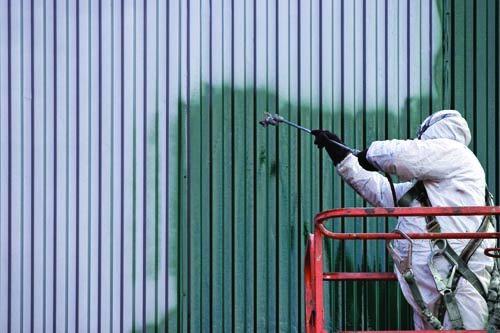Toluene safety

Toluene is a clear and colorless liquid that turns to vapor when exposed to air at room temperature. According to OSHA, it’s often used in a mixture with other solvents and chemicals, such as paint pigments, so employees who work with paint, metal cleaners and adhesives may be at risk for exposure.
Other workers who may be exposed include those who use toluene-containing paints, varnishes, shellac, glues and adhesives.
Health hazards
Toluene exposure can negatively affect workers’ health, particularly when they breathe in its fumes, get it on their skin, unintentionally swallow it or get splashed with it. Exposure symptoms include irritation of the eyes and nose; exhaustion, confusion and weakness; headache, anxiety and insomnia; and skin tingling or dermatitis. In addition, toluene can damage a worker’s liver and kidneys, and long-term exposure can result in central nervous system problems.
Protection
Toluene has a federal OSHA permissible exposure limit, but many people can smell it below its PEL because of its sharp, sweet odor. OSHA notes that Safety Data Sheets provided by suppliers of toluene-containing products must disclose the presence of the liquid, and employers must provide workers with copies of the SDSs.
To help keep workers safe from toluene, OSHA recommends:
- When possible, substitute a product that doesn’t contain toluene.
- If a product containing toluene is necessary, use brush, roller or flow application instead of spray application. Use as little of the product as possible.
- Ensure the work area is well-ventilated. “Ventilation is the most important protective measure to reduce the inhalation of toluene vapors where safer substitutes are not feasible,” OSHA states. If the application of a toluene-containing product involves spraying, use a spray booth with local exhaust ventilation.
- Wear appropriate personal protective equipment, including neoprene or nitrile gloves.
Post a comment to this article
Safety+Health welcomes comments that promote respectful dialogue. Please stay on topic. Comments that contain personal attacks, profanity or abusive language – or those aggressively promoting products or services – will be removed. We reserve the right to determine which comments violate our comment policy. (Anonymous comments are welcome; merely skip the “name” field in the comment box. An email address is required but will not be included with your comment.)

